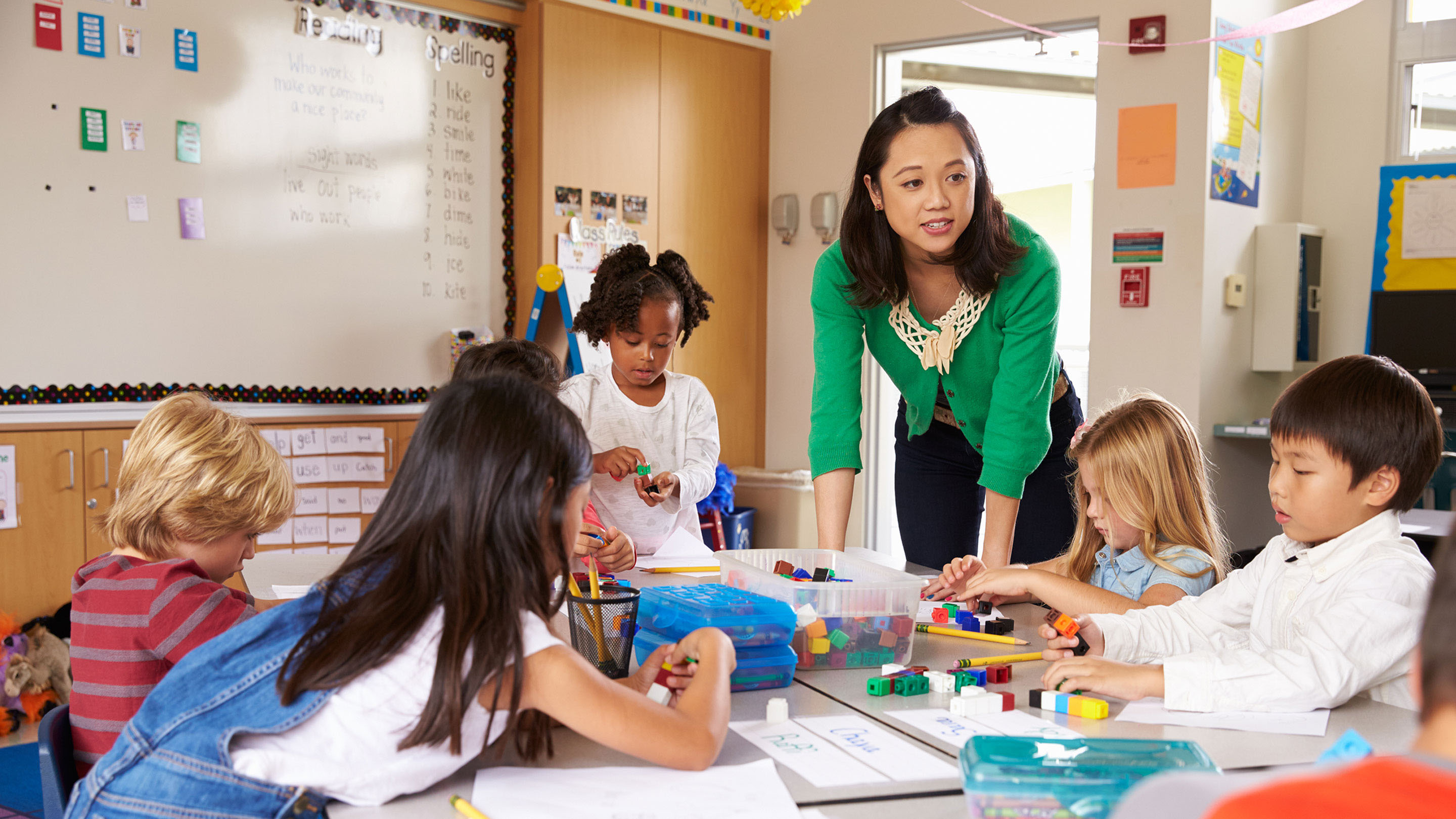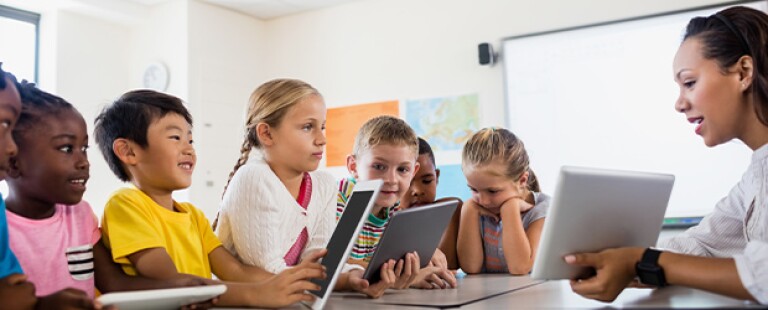Effective Primary Science Tuition Singapore for Better Exam Results
Effective Primary Science Tuition Singapore for Better Exam Results
Blog Article
A Comprehensive Overview to the Various Discovering Methods in Primary Scientific Research Direction
The expedition of diverse learning methods in key scientific research instruction offers a chance for instructors to enhance trainee interaction and understanding dramatically. By examining hands-on discovering techniques, inquiry-based strategies, and collaborative approaches, we can determine reliable techniques that accommodate various finding out designs. Furthermore, the assimilation of modern technology and distinguished direction plays a crucial duty in promoting an inclusive atmosphere. Nonetheless, the inquiry continues to be: how can these techniques be efficiently applied in the classroom to maximize their effect? The response exists in a more detailed evaluation of each strategy and its effects for training science.

Hands-On Discovering Techniques
Hands-on knowing methods play an essential function in primary scientific research instruction, engaging pupils in active exploration and testing. These approaches allow students to interact straight with products and sensations, promoting a deeper understanding of clinical ideas. By making use of manipulatives, designs, and real-life experiments, educators develop an atmosphere where pupils can observe, assume, and check their concepts.
Such methods not only improve comprehension yet also grow essential thinking and problem-solving skills. When pupils join tasks like constructing straightforward equipments, planting seeds, or carrying out chain reactions, they are urged to ask questions and look for solutions through their own observations. This experiential method assists to debunk complex scientific concepts, making them more relatable and obtainable.
In addition, hands-on knowing advertises partnership amongst peers, as pupils typically operate in groups to conduct experiments or share findings. This team effort not only improves their learning experience but likewise develops crucial social skills. Eventually, integrating hands-on techniques in key science guideline cultivates a lifelong love of discovering and curiosity regarding the environment, laying a strong structure for future scholastic quests in science and beyond.
Inquiry-Based Discovering
Inquiry-based learning is an educational technique that urges trainees to ask inquiries, check out sensations, and construct their very own understanding of clinical concepts. This technique shifts the focus from traditional teacher-led guideline to a much more student-centered experience, where students take the campaign in their instructional journey. By fostering interest, inquiry-based understanding promotes much deeper involvement with the material, allowing students to discover topics in a meaningful context.
In technique, this approach commonly includes hands-on experiments, observations, and essential thinking tasks that line up carefully with the scientific approach. Students are motivated to create hypotheses, design examinations, and evaluate information, which cultivates essential abilities such as problem-solving and logical reasoning. The duty of the educator in this structure is to help with exploration, assisting trainees with the query process while motivating independent idea and collaboration.
Moreover, inquiry-based discovering supports a sense of possession over the discovering procedure, encouraging trainees to pursue expertise actively. This method not only enhances understanding of clinical ideas yet likewise cultivates a lifelong love for knowing, furnishing students with the skills necessary to browse a progressively complicated globe.
Collaborative Learning Approaches
Collaborative understanding methods empower trainees to participate in meaningful communications with peers, promoting a shared obligation for their instructional outcomes. In key science guideline, these methods urge learners to work with each other to discover scientific principles, resolve problems, and perform experiments (primary science tuition Singapore). By getting involved in group activities, pupils can leverage varied perspectives, enabling for richer understanding and retention of clinical knowledge
One trick aspect of collective knowing is the focus on interaction abilities. Students must verbalize their ideas, listen proactively to others, and bargain ideas, all of which are critical proficiencies in both academic and real-world contexts. This social interaction not just boosts their understanding of scientific principles but also promotes teamwork and problem resolution skills.
When trainees see the value of their contributions within a group, they are more likely to take ownership of their discovering trip. Overall, integrating joint understanding strategies in key scientific research direction grows a vibrant learning environment that prepares students for future academic and social difficulties.
Technology Combination in Science
The assimilation of technology in primary scientific research instruction enhances learning experiences by offering ingenious devices and sources that support different teaching approaches, including collaborative knowing - primary science tuition Singapore. Using electronic platforms, simulations, and interactive applications enables students to about his engage deeply with scientific concepts, helping with an extra hands-on technique to learning
Virtual labs, for example, enable students to conduct experiments securely and efficiently, promoting inquiry-based discovering. These tools can simulate real-world clinical situations, enabling students to imagine complicated processes that would be challenging to reproduce in a conventional class setup. Additionally, innovation fosters communication and cooperation amongst pupils, as they can share searchings for and collaborate on tasks through on the internet systems.
In addition, multimedia presentations and educational video clips can improve lessons by accommodating varied learning designs, making abstract concepts extra accessible. Information evaluation devices also empower students to gather and translate clinical data, enhancing vital thinking abilities. In general, the critical unification of technology in main scientific research instruction not just enhances interaction yet also prepares pupils for a technically sophisticated culture, furnishing them with important skills for future scientific endeavors.
Differentiated Instruction Techniques
Set apart direction methods are essential for addressing the diverse requirements of students in main scientific research education. These techniques enable instructors to tailor their mentor approaches to fit varying capacities, interests, and learning designs within the classroom. By employing distinguished direction, teachers can create an inclusive atmosphere that fosters engagement and boosts understanding of scientific ideas.
One effective strategy is to make use of adaptable grouping, which allows trainees to collaborate with peers at comparable ability degrees or with varying perspectives. This strategy encourages peer understanding and advertises crucial thinking. Furthermore, offering selections in assignments can encourage pupils, enabling them to pick tasks that reverberate with their rate of interests while still satisfying curricular goals.
Moreover, incorporating tiered tasks is another beneficial method. By creating tasks with varying levels of complexity, teachers can ensure that all pupils are properly challenged, no matter of their effectiveness. Using developmental assessments to determine comprehending further makes it possible for educators to adjust their educational techniques dynamically, guaranteeing that each student receives the support they need.
Ultimately, applying distinguished instruction techniques in main science education and learning not only enhances student learning end results however additionally grows a passion for scientific research, preparing pupils for future scholastic pursuits.

Final Thought
In summary, reliable key scientific research direction requires a diverse technique that encompasses hands-on read more understanding, inquiry-based techniques, and collective techniques. The integration of modern technology and distinguished guideline additionally caters to varied understanding styles, cultivating an atmosphere helpful to exploration and vital reasoning. By implementing these methods, instructors can boost trainee interaction and original site understanding, eventually nurturing a lifelong passion for scientific research and query. Such thorough techniques are essential for creating educated and interested future researchers.
The expedition of diverse knowing methods in key science instruction presents a chance for educators to enhance trainee involvement and comprehension significantly.Hands-on learning methods play a crucial duty in main scientific research guideline, engaging trainees in energetic exploration and experimentation.Inquiry-based discovering is an instructional strategy that motivates students to ask concerns, examine sensations, and construct their own understanding of scientific ideas.Joint understanding strategies encourage trainees to engage in meaningful interactions with peers, cultivating a shared obligation for their academic end results. In general, integrating joint understanding methods in main science direction cultivates a vibrant knowing atmosphere that prepares trainees for future academic and social difficulties.
Report this page